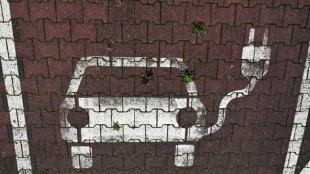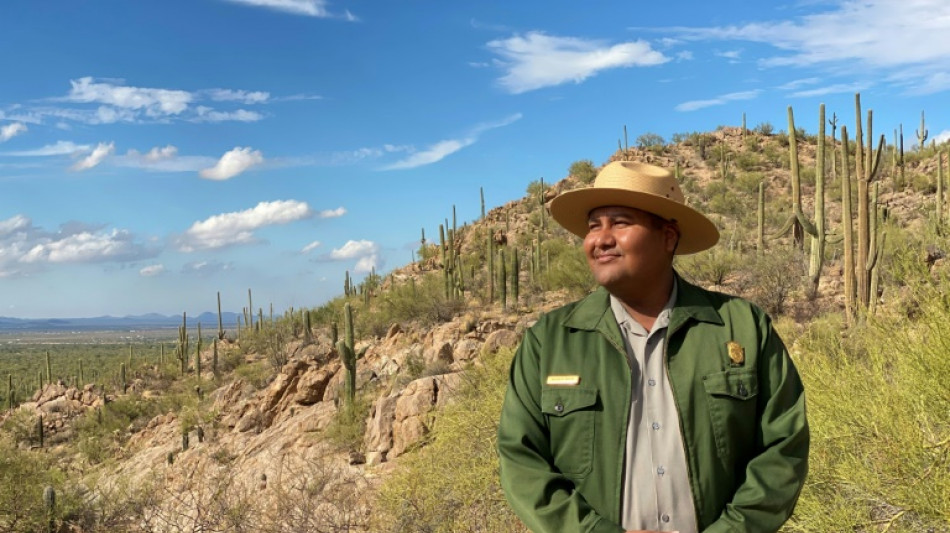
-
 Guardiola hails Man City's 'big statement' in win at Palace
Guardiola hails Man City's 'big statement' in win at Palace
-
Lens reclaim top spot in Ligue 1 with Nice win

-
 No 'quick fix' at Spurs, says angry Frank
No 'quick fix' at Spurs, says angry Frank
-
Toulon edge to victory over Bath, Saints and Quins run riot

-
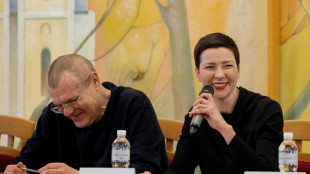 Freed Belarus protest leader Kolesnikova doesn't 'regret anything'
Freed Belarus protest leader Kolesnikova doesn't 'regret anything'
-
Man City smash Palace to fire title warning, Villa extend streak

-
 Arshdeep helps India beat South Africa to take T20 series lead
Arshdeep helps India beat South Africa to take T20 series lead
-
Zelensky meets US envoys in Berlin for talks on ending Ukraine war

-
 'Outstanding' Haaland stars in win over Palace to fire Man City title charge
'Outstanding' Haaland stars in win over Palace to fire Man City title charge
-
Man City smash Palace to fire title warning, Villa extend winning run

-
 Napoli stumble at Udinese to leave AC Milan top in Serie A
Napoli stumble at Udinese to leave AC Milan top in Serie A
-
No contact with Iran Nobel winner since arrest: supporters
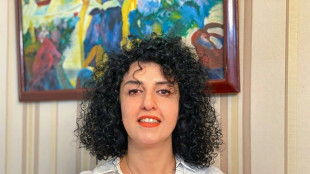
-
 Haaland stars in win over Palace to fire Man City title charge
Haaland stars in win over Palace to fire Man City title charge
-
French PM urged to intervene over cow slaughter protests
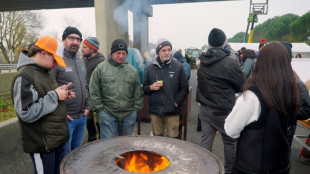
-
 'Golden moment' as Messi meets Tendulkar, Chhetri on India tour
'Golden moment' as Messi meets Tendulkar, Chhetri on India tour
-
World leaders express horror, revulsion at Bondi beach shooting

-
 Far right eyes comeback as Chile presidential vote begins
Far right eyes comeback as Chile presidential vote begins
-
Marcus Smith shines as Quins thrash Bayonne

-
 Devastation at Sydney's Bondi beach after deadly shooting
Devastation at Sydney's Bondi beach after deadly shooting
-
AC Milan held by Sassuolo in Serie A

-
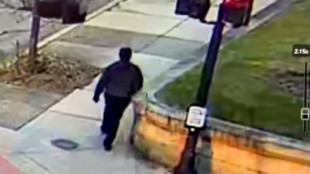 Person of interest in custody after deadly shooting at US university
Person of interest in custody after deadly shooting at US university
-
Van Dijk wants 'leader' Salah to stay at Liverpool

-
 Zelensky in Berlin for high-stakes talks with US envoys, Europeans
Zelensky in Berlin for high-stakes talks with US envoys, Europeans
-
Norway's Haugan powers to Val d'Isere slalom win
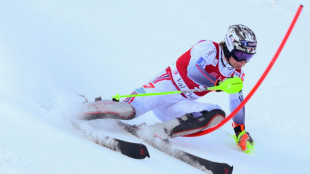
-
 Hong Kong's oldest pro-democracy party announces dissolution
Hong Kong's oldest pro-democracy party announces dissolution
-
Gunmen kill 11 at Jewish festival on Australia's Bondi Beach

-
 Zelensky says will seek US support to freeze front line at Berlin talks
Zelensky says will seek US support to freeze front line at Berlin talks
-
Man who ploughed car into Liverpool football parade to be sentenced

-
 Wonder bunker shot gives Schaper first European Tour victory
Wonder bunker shot gives Schaper first European Tour victory
-
Chile far right eyes comeback as presidential vote opens
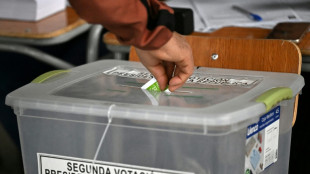
-
 Gunmen kill 11 during Jewish event at Sydney's Bondi Beach
Gunmen kill 11 during Jewish event at Sydney's Bondi Beach
-
Robinson wins super-G, Vonn 4th as returning Shiffrin fails to finish

-
 France's Bardella slams 'hypocrisy' over return of brothels
France's Bardella slams 'hypocrisy' over return of brothels
-
Ka Ying Rising hits sweet 16 as Romantic Warrior makes Hong Kong history

-
 Shooting at Australia's Bondi Beach kills nine
Shooting at Australia's Bondi Beach kills nine
-
Meillard leads after first run in Val d'Isere slalom

-
 Thailand confirms first civilian killed in week of Cambodia fighting
Thailand confirms first civilian killed in week of Cambodia fighting
-
England's Ashes hopes hang by a thread as 'Bazball' backfires

-
 Police hunt gunman who killed two at US university
Police hunt gunman who killed two at US university
-
Wemby shines on comeback as Spurs stun Thunder, Knicks down Magic

-
 McCullum admits England have been 'nowhere near' their best
McCullum admits England have been 'nowhere near' their best
-
Wembanyama stars as Spurs stun Thunder to reach NBA Cup final

-
 Cambodia-Thailand border clashes enter second week
Cambodia-Thailand border clashes enter second week
-
Gunman kills two, wounds nine at US university

-
 Green says no complacency as Australia aim to seal Ashes in Adelaide
Green says no complacency as Australia aim to seal Ashes in Adelaide
-
Islamabad puts drivers on notice as smog crisis worsens

-
 Higa becomes first Japanese golfer to win Asian Tour order of merit
Higa becomes first Japanese golfer to win Asian Tour order of merit
-
Tokyo-bound United plane returns to Washington after engine fails
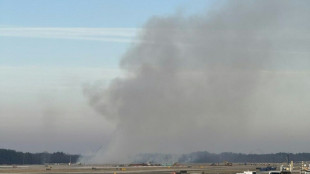
-
 Deja vu? Trump accused of economic denial and physical decline
Deja vu? Trump accused of economic denial and physical decline
-
Vietnam's 'Sorrow of War' sells out after viral controversy


In US national parks, a historical wound begins to heal
When Raeshaun Ramon first donned the distinctive green and gray uniform of a US National Park Service ranger, he feared his Native American tribe would judge him for his choice.
As a member of the Tohono O'odham nation, he didn't want to talk too much about his new job at Saguaro National Park in Arizona.
"I was afraid of what my people might think of me," the 28-year-old confides. "Why work for a place that has done us so much harm in the past?"
Most national parks were set up in areas that are Indigenous ancestral lands. From the 19th century onwards, Native Americans were expelled from those lands or forced to cede them via treaties with unequal terms.
It is a disturbing history not often associated with the natural beauty of the nation's parks.
Ramon is the first ranger at Saguaro to belong to the Tohono O'odham nation -- literally, the "desert people" -- even though the park is their historic territory.
Amid expanses of cacti, he tells AFP of his relief when his community rejoiced that "someone who looks like them" was finally represented at the park.
Today, he sees himself as a "bridge" between his colleagues, park visitors and his tribe, although he describes it as a "heavy responsibility."
His story illustrates the changes slowly underway within the National Park Service (NPS) -- the agency within the Department of the Interior in charge of national parks -- to improve its relations with Indigenous peoples.
For the first time, the agency's director is Native American -- a strong signal of the attempt to repair historical wounds.
- Traditional harvest -
"The visitors need to realize that this is Indian country," stresses Mike Turek, author of one of the few books on the relationship between Native Americans and the national parks.
"These are native lands, managed by the natives and used for centuries."
"The violence was a taking of the land," Turek says, adding that Indigenous access was restricted.
At Yellowstone, one of the crown jewels of the park system established in 1873, early administrators claimed that Native Americans had never entered the area for fear of geysers, Turek says.
In other cases, conflicts led to bloodshed. Shortly before the creation of Yosemite National Park, Native Americans were forcibly evicted or killed.
Today, the traditional use of land by these communities is one of the bones of contention, Turek says.
Jacelle Ramon-Sauberan, 35, also a member of the Tohono O'odham nation, recalls difficult interactions with Saguaro park employees who "shouted at them" when she and other family members came to pick the fruit of the cacti, considered sacred, during her childhood.
This tradition has been practiced by her people since "time immemorial," recounts Ramon-Sauberan, who has a doctorate in American Indian studies from the University of Arizona.
Syrup made from Saguaro cactus fruit is used for ceremonies and as medicine.
She said that the NPS even tried to ban harvesting of the fruit in the middle of the last century. Today, harvests are regulated by permits.
"I will truthfully speak that the relationship between the park and the Tohono O'odham wasn't always the best," she says. "It's a lot better than it used to be... We are heading in the right direction of really being partners with each other."
- Partnerships -
In 2021, Native American author David Treuer put forth a provocative idea in an article for The Atlantic magazine: "return the National Parks to the tribes," a move he wrote "would restore dignity that was rightfully ours."
For now, NPS Director Chuck Sams supports the development of partnerships.
There are currently some 80 co-management agreements between the NPS, in charge of more than 400 sites across the country, and some of the more than 500 Native American tribes currently active in the United States.
In northern Montana, Termaine Edmo takes part in the Native America Speaks program, which each summer brings members of her tribe, the Blackfeet Nation, to share their history with visitors to Glacier National Park.
But the 35-year-old activist, her eyebrows furrowed, speaks harshly of those who administer the land "stolen" from her people.
"They're still oppressing us," says Edmo, whose license plate begins with the letters "DECO," for "decolonization."
The past has left its mark: Native American reservations established for those driven from ancestral homes are predominantly poor and often wracked by high suicide and drug overdose rates.
Edmo regrets that so few visitors stop at her reservation, which is adjacent to the park, with the economic influx going to other towns.
As climate change coordinator for her nation, she would like to develop ecotourism to attract travelers to natural preservation projects, such as snow fencing, and regenerative grazing.
Despite all this, park officials are "trying to be open," she says. "They're willing to work with us. They're willing to step out of that box."
Last year, some 40 bison were reintroduced to repopulate the park.
- Rehabilitation -
New guidelines issued in 2022 aim to strengthen cooperative agreements which, according to Sams, should make it possible to "recognize the existence of deep wounds and hopefully heal some of them."
But they also aim to make better preservation decisions, drawing on deep tribal knowledge.
Recently, for example, Native American techniques of controlled burning -- to clear vegetation and avoid catastrophic fires -- have been re-established.
The increased hiring of Native American employees should also help bring change.
Of the 20,000 or so NPS employees, around 2.5 percent are American Indian or native Alaskan -- a figure that is "still remarkably low," the agency notes.
Ramon, the new ranger at Saguaro, would like to start by redesigning some information panels to include names in his traditional language, or because some signs "say that there was once a population living here" but "it stops there," he says.
"Visitors ask me: 'What happened to the people who lived here?' I smile at them and say: 'They're still here. Because I'm here.'"
M.Qasim--SF-PST


